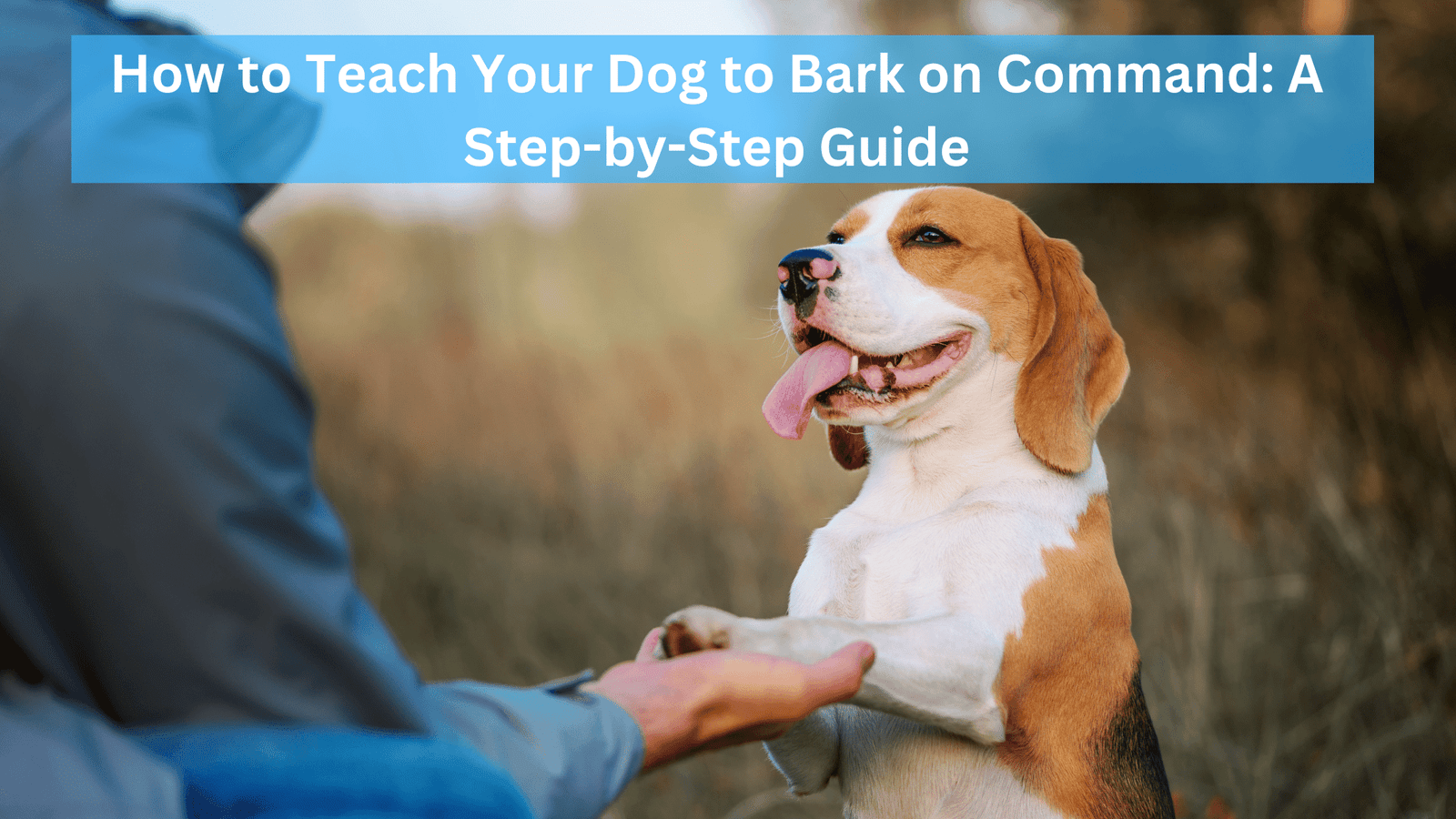How to teach your dog to bark on command is not just a fun trick; it can also be useful for alerting you to potential dangers or intruders. This blog post will guide you through the process, ensuring that your furry friend learns this command in a way that is effective and permanent.
Why Teach Your Dog to Bark on Command?
Before diving into the training steps, it’s important to understand why this skill can be beneficial:
- Alertness: Your dog can alert you to strangers or unusual activity.
- Communication: It enhances communication between you and your dog.
- Mental Stimulation: Learning new commands provides mental stimulation for your dog.
- Control: Teaching to bark on command can help manage excessive barking.
Step-by-Step Guide to How to Teach Your Dog to Bark on Command

Step 1: Choose the Right Command and Reward
Select a command word like “speak” or “bark”. Consistency is key, so stick with one command. Also, choose a reward that your dog loves, such as treats, toys, or praise.
Step 2: Find the Right Setting
Start in a quiet, distraction-free environment to help your dog focus on the training session.
Step 3: Trigger the Bark
To teach your dog to bark, you need to find a trigger. This could be the sound of a doorbell, a knock, or even you barking (yes, you read that right!). Once you find what makes your dog bark, you’re ready to move on to the next step.
Step 4: Pair the Command with the Action
When your dog barks due to the trigger, immediately say your command word “speak” and then give a treat. The sequence should be:
- Trigger the bark.
- Say the command (“speak”).
- Reward the bark.
Step 5: Practice and Repeat
Consistency is essential. Practice this multiple times a day, but keep sessions short (5-10 minutes) to avoid frustrating your dog. Repetition will help your dog associate the command with the action.
Step 6: Remove the Trigger
Once your dog starts barking on command consistently with the trigger, begin to remove the trigger. Say the command word “speak” without using the trigger and reward the dog if they bark.
Step 7: Reinforce the Behavior
Continue to reinforce the behavior by practicing regularly. Gradually increase the difficulty by introducing distractions and practicing in different environments.
Step 8: Add a “Quiet” Command
To maintain control over the barking, teach your dog a “quiet” command. After your dog barks on command, say “quiet” and wait for them to stop barking. Reward them when they do. This teaches your dog to stop barking when told.
Troubleshooting Common Issues
Dog Doesn’t Bark
Some dogs are naturally quieter. If your dog doesn’t respond to typical triggers, try to find what excites or startles them. Patience is key, and using high-value rewards can also help.
Inconsistent Barking
If your dog is inconsistent, revisit the training steps. Ensure you’re using the same command and reward every time. Consistency and repetition are crucial.
Over-Barking
If your dog starts barking excessively, reinforce the “quiet” command and only reward controlled barking. Do not reward if they bark excessively.
Frequently Asked Questions (FAQs)
How long does it take to teach a dog to bark on command?
It varies depending on the dog, but with consistent training, many dogs learn within a few weeks.
Can all dogs learn to bark on command?
Yes, most dogs can learn this command, although some might take longer depending on their temperament and breed.
Should I use a clicker for training?
A clicker can be a helpful tool for marking the exact moment your dog performs the desired behavior, making the training process clearer for them.
How To Teach Your Dog To Be Quiet On Command
If your dog starts barking excessively, reinforce the “quiet” command and only reward controlled barking. Do not reward if they bark excessively.
Conclusion
Teaching your dog to bark on command is a rewarding experience that strengthens your bond. With patience, consistency, and positive reinforcement, your dog will master this command. Remember to practice regularly and reinforce the behavior to ensure it becomes a permanent skill.
For more tips on dog training and behavior, subscribe to our newsletter and follow us on social media!
By following these steps, you’ll be well on your way to having a dog that can bark on command, providing both entertainment and practical benefits. Happy training!
